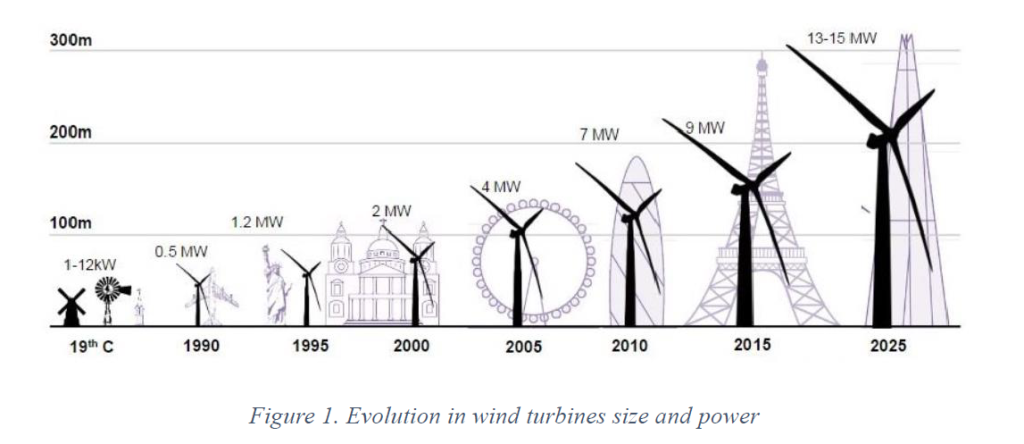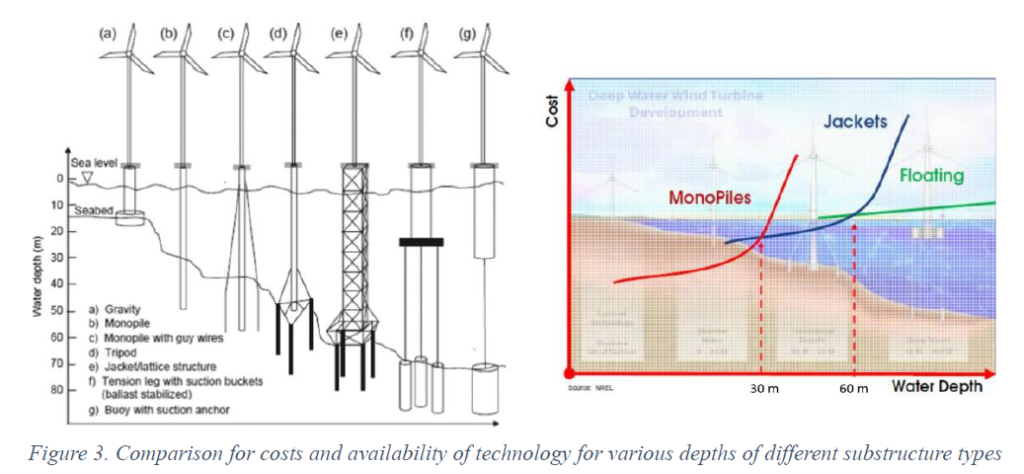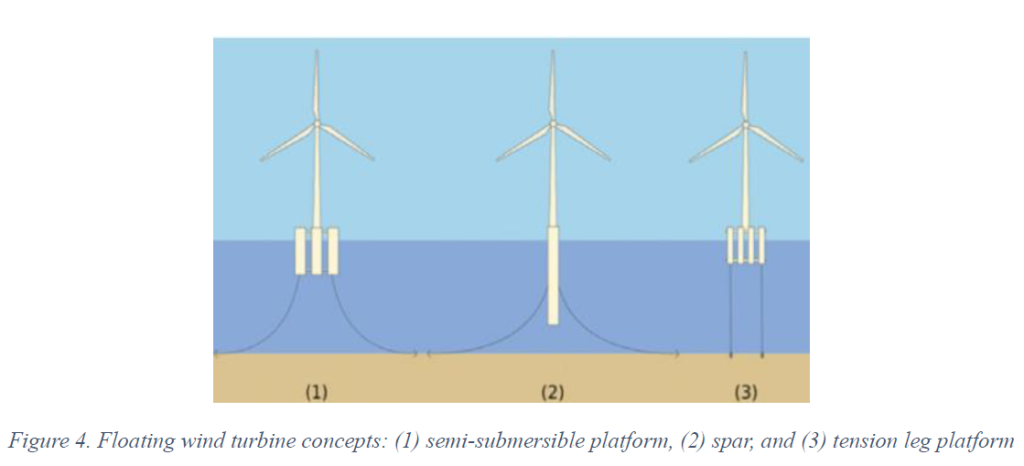Wind turbines are always promoted as clean energy providers that have brought many benefits for the environment. Also due to their characteristic features, they are applicable in various places and with a variety of sizes. However, this story has another part and there are some drawbacks, too. For instance, their noise may bother people in the neighborhood. They can affect wildlife and landscape, and also in some societies can be seen as disturbing items by people.
In addition to social acceptance of local people, high price of land or limited availability of space to found a wind farm has restricted onshore farms. Wind also can be affected by the obstacles such as buildings, mountains, and so on which results in a turbulent wind flow and lower wind speed which causes many problems such as higher probability of fatigue and failure as well as lower efficiency of wind turbines. Mentioned factors are main motivations that has pushed wind industry toward offshore wind, which can offer abundant of wind resources and enormous available space. In the figure 1 you can find the evolutionary procedure which has been illustrated in larger wind turbines with higher generated power.

Reduction in LCOE (levelized cost of energy) is a vital term for surviving in the electricity market. For this reason, wind turbines are going to have increased dimensions to be more beneficial economically. Obviously, there is enough space in the sea environment to install large turbines and enjoy low turbulent strong winds in order to produce power without any opposition of neighbors. However, offshore wind also has some barriers that need to be considered. In other words, difficulties in transportation, installation, operation and maintenance have made the situation tricky for the offshore industry. Moreover, limitations on the technologies available according to water depth, complications for transferring the generated electricity to the shores, and salty environment that is more corrosive, are some of barriers in the offshore wind field.
In figure 2 enormous potentials and barriers in Europe for development of offshore wind farms are more apprehensible. Many of areas with powerful winds are in the areas with over 60 meters water depth.

Currently installed offshore turbines are generally in 50 meters or lower water depth and preponderantly have bottom fixed foundations. Depend on the water depth, they are gravity base, monopile, tripod, or jacket foundation (fixed bottom foundations). These substructures are applicable for water depths under 60 meters and they are not suitable, from an economical point of view, for deeper locations (figure 3). Accordingly, in order to benefit from substantial resources in deep waters and fulfil the social acceptance, floating offshore wind turbines have drawn more considerations in the last decade.

Different companies and research groups tried to propose concepts that could survive in harsh sea conditions. Proposed stability systems, as the names suggest, mainly use three different principles for stabilizing the floaters against thrust overturning loads as well as wave and current loads. Floating offshore wind turbines (figure 4) also used to be classified in three main groups by their stabilizing feature: a. ballast stabilized (Spars), b. water plane area or buoyancy stabilized (semi-submersibles), and c. mooring stabilized (Tension Leg Platforms).

A combination of these items is usually applied to achieve optimal substructures that have necessary buoyancy (to carry the weight of the turbine) and stability (to minimize the failure and maximize the output electricity). For instance, all three platforms using mooring system to enhance their stability. It is necessary to note that there are six different mooring systems which each type is compatible with different substructures. Mooring systems commonly constitute of anchors, chains or lines (made up of steel or polyester) and connectors. They increase the stability of system by restricting surge, yaw, and sway motions. Contribution of each stability criterion in making the mentioned platforms float-able have been illustrated in figure 5 (known as stability triangle).

All these platforms are made of steel or reinforced concrete (older models). In the following features of each foundation is briefly described. Spar platforms are designed only for deep waters (over 100 meters). Thanks to the ballast tank at the bottom of this platform, the center of gravity is placed lower than its center of buoyancy which means the system can use the restoring force to stabilize itself. For this reason, Pitch and roll rotational motions are limited in spars. In general, Spar seems to be an optimal floating platform due to its simplicity and excellent stability (better than semi-submersible) and lower costs of anchoring system
(compare to TLP). However, in the production process it needs larger space because of its dimensions. Also, heave natural frequency of this floating platform need to be kept minimized.
Semi-submersible platforms are more flexible with different water depths (over 40 meters). They are made up of some columns and pontoons that give the floaters stability and extra buoyancy, respectively. Installation and transportation of these substructures is very convenient (compared to TLP and spar) and the anchoring cost is cheaper (compared to TLP). The center of gravity for this foundation is higher than the center of the buoyancy and the restoring moment of the columns and mooring system keep the floating foundation stabilized.
Similar to semi-submersible platforms, Tension Leg Platforms (TLPs) also constitute of some columns and pontoons and can be installed in a wide variety of water depths (over 40 meters). However, their mooring systems has made them unique from their rivals. It is connected to the ground by vertical tensioned tendons which make the platform stabilized. This system prevents heave, pitch and roll motions but it’s compliant with horizontal motions (surge and sway). TLP is smaller than Spar and semi-submersible and this helps it to encounter less loads. TLP is very delicate against high frequency dynamic loads because of the structure high stiffness, and this may cause strong damages by the creation of resonance in pitch and heave motions. TLP is also the most expensive platform among the compared floating foundations and has complicated maintenance procedures, too. In addition, the technology readiness level for this platform is less than the other platforms.
Written by HKAM from permanentingenior.dk. 04052023 kl. 2158 dk.







